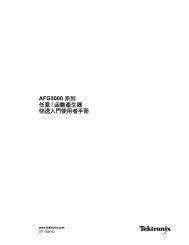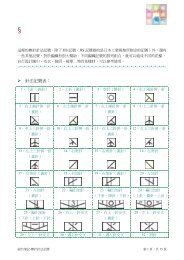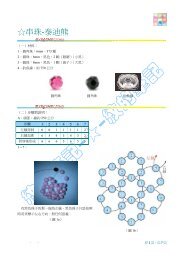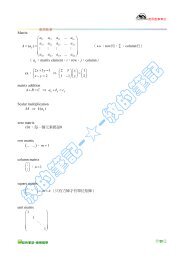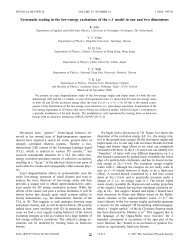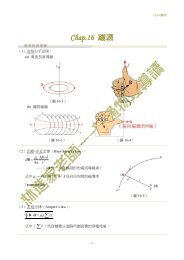Chapter 22 Materials Selection and Design Considerations
Chapter 22 Materials Selection and Design Considerations
Chapter 22 Materials Selection and Design Considerations
Create successful ePaper yourself
Turn your PDF publications into a flip-book with our unique Google optimized e-Paper software.
W116 • <strong>Chapter</strong> <strong>22</strong> / <strong>Materials</strong> <strong>Selection</strong> <strong>and</strong> <strong>Design</strong> <strong>Considerations</strong><br />
Computation of<br />
breakthrough time<br />
for passage of a<br />
hazardous chemical<br />
through a chemical<br />
protective glove<br />
material<br />
suggest that its presence in the body may cause cancer as well as birth defects.<br />
Computations of breakthrough time <strong>and</strong> exposure rate for methylene chloride that<br />
is in contact with potential glove materials are possible. In light of the hazardous<br />
nature of CH2Cl2, for these calculations any assumptions we make are conservative,<br />
<strong>and</strong> overestimate the inherent dangers.<br />
The breakthrough time tb is related to the diffusion coefficient of methylene<br />
chloride in the glove material (D) <strong>and</strong> the glove thickness ( / ) according to the following<br />
equation:<br />
t b<br />
(<strong>22</strong>.24)<br />
Values of D, / , <strong>and</strong> (computed using the above expression) for several commercially<br />
available CPC glove materials are provided in Table <strong>22</strong>.5. Breakthrough times<br />
can also be measured directly using appropriate equipment; these measured values<br />
are in good agreement with the calculated ones presented in the table.<br />
For exposure rate computations, we assume that a condition of steady-state diffusionhasbeenachieved,<strong>and</strong><br />
also that the concentration profile is linear [Figure 5.4(b)].<br />
In actual fact, at the outset of exposure to methylene chloride, its diffusion through<br />
the glove is nonsteady-state, <strong>and</strong> the accompanying diffusion rates are lower than<br />
those calculated for conditions of steady state. For steady-state diffusion, the diffusion<br />
flux J is according to Equation 5.3 as<br />
And for a linear concentration profile, this equation takes the form<br />
(<strong>22</strong>.25)<br />
J ��D (<strong>22</strong>.26)<br />
We arbitrarily take the A <strong>and</strong> B subscripts to denote glove surfaces in contact with<br />
the methylene chloride <strong>and</strong> with the h<strong>and</strong>, respectively. In addition, the glove thickness<br />
/ � xB � xA, such that the above equation now takes the form<br />
CA � CB xA � xB r e<br />
t b � /2<br />
6D<br />
J ��D dC<br />
dx<br />
J � D C A � C B<br />
/<br />
(<strong>22</strong>.27)<br />
Now, the exposure rate<br />
surface area (A)—that is<br />
is equal to the product of the diffusion flux <strong>and</strong> total glove<br />
re � JA � (<strong>22</strong>.28)<br />
DA<br />
/ 1CA � CB2 An average size pair of gloves has an inside surface area of about 800 cm 2 . Furthermore,<br />
the surface concentration of methylene chloride (i.e., ) is equal to its<br />
solubility in that polymer (which we denote as ); solubility values for the several<br />
glove materials are also included in Table <strong>22</strong>.5. Now, if we assume that all methylene<br />
chloride, upon contact, is immediately absorbed by the skin <strong>and</strong> swept away by<br />
the blood stream, then takes on a value of 0 g/cm 3 . 8 CA SA CB Thus, upon making the above<br />
8<br />
In most practical situations, CB 7 0 g/cm since not all of the methylene chloride that<br />
passes through the glove will immediately be absorbed into the skin <strong>and</strong> removed from<br />
the h<strong>and</strong> by the blood stream. Thus, the values of re we calculate will be greater than the<br />
actual exposure rates that the h<strong>and</strong>s experience.<br />
3



